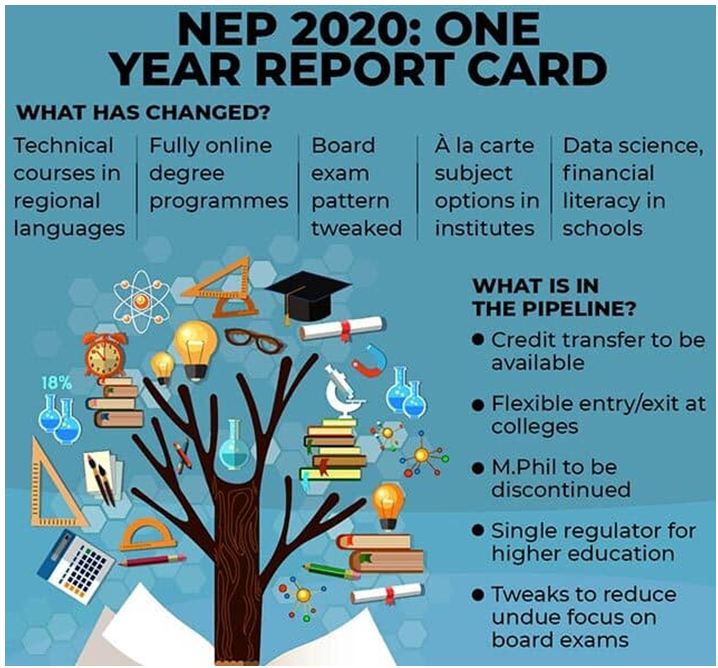

Introduction
- July 29th marked the completion of one year of the new National Education Policy.
- The policy document was launched in 2020, paving the way for transformational reforms in school and higher education systems, improve understanding and employability of graduates in the country and to make India a global knowledge superpower.
- To mark one year of these reforms, Prime Minister Narendra Modi addressed policy makers in the domain of education and skill development, students and teachers.
- The Prime Minister also launched multiple initiatives in the education sector such as the
- academic bank of credit that will provide multiple entry and exit options for students in higher education
- first year engineering programmes in regional languages
- guidelines for internationalization of higher education
- The Prime Minister also launched multiple initiatives in the education sector such as the
- The National Digital Education Architecture (NDEAR) and the National Education Technology Forum (NETF) were also launched at the event.
- These initiatives will help in realizing the goals of NEP 2020 and will make education more holistic, accessible, and affordable.
In this brief, the NEP policy and its dimensions are discussed to help understand how the NEP is being implemented and the structural reforms it aims to bring about to suit the 21st century needs in education.
Edited Excerpts from the debate
What has changed in one year?
- Curricula have been tweaked in schools to include subjects such as financial literacy and artificial intelligence.
- When it comes to the medium of instruction in schools and colleges, the mother tongue or a regional language has been introduced on a pilot basis.
What about promotion of official languages of India?
- The key aspect of NEP 2020 was the promotion of all official languages of India, apart from English.
- It was suggested that schools and higher education institutes give students the option to study in their mother tongues.
- A few hundred schools in the country are now offering this option on a pilot basis.
- The translation of books is under way.
Pending Key-reforms
- Flexible entry and exit for college students
- Allowing international institutes to set up campuses in India
Important initiatives in education sector
- Kaushal Bharat, Kushal Bharat: Prime Minister Narendra Modi propelled the Skill India activity – ‘Kaushal Bharat, Kushal Bharat’.
- Under this initiative, the government has set itself an objective of preparing 400 million natives by 2022 that would empower them to discover occupations.
- The initiatives propelled incorporate different projects like:
- Pradhan Mantri Kaushal Vikas Yojana (PMKVY)
- National Policy for Skill Development and Entrepreneurship 2015
- Skill Loan Scheme
- National Skill Development Mission
- Pradhan Mantri Kaushal Vikas Yojana (PMKVY) is the flagship program under the Skill India Initiative.
Conclusion
In recent years, India’s education sector has considered a host of reforms and accelerated economic outlays. These reforms could perchance transform India into a knowledge haven. Especially reforms through NEP will probably lead to extensive increment in education in the country.
Value Addition
India’s national education policies
India has total three NEPs to date
- The first came in 1968.
- The second in 1986, under Indira Gandhi and Rajiv Gandhi respectively
- The NEP of 1986 was revised in 1992 when P V Narasimha Rao was Prime Minister.
- The third is the NEP 2020.
What is National Education Policy 2020?
- The National Education Policy 2020 was revised after 34 years to meet the changing needs of Indian and international education standards.
- Equitable and Inclusive Education: It aimed at ensuring that no child loses any opportunity to learn and excel because of the circumstances of birth or background.
- NEP 2020 envisages clear, separate systems for policymaking, regulation, operations, and academic matters.
- It is built on the foundational pillars of Access, Equity, Quality, Affordability and Accountability.
|
Increase GER to 50 % by 2035:
|
More Articles


